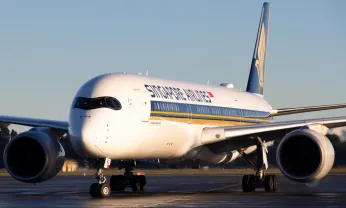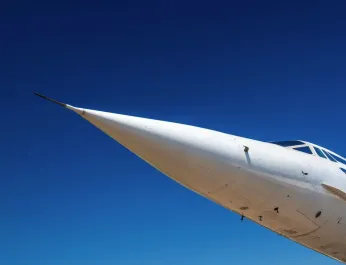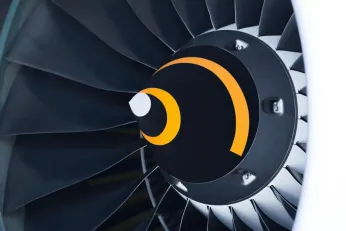
Is It Still Possible to Visit an Aircraft Cockpit Today?
Years ago, cockpit visits were common, but modern security rules have made them rare—though you might still get a chance after landing.
Table of Contents
For many aviation enthusiasts, stepping into an aircraft cockpit is a dream come true. The cockpit is the heart of any airplane, where pilots control the aircraft using an array of buttons, screens, and switches. Decades ago, it was common for curious passengers—especially children—to visit the cockpit before or even during a flight, getting a close-up look at how pilots operate the plane.
However, aviation security has changed dramatically over the years. Following the 9/11 attacks, strict regulations have been introduced to prevent unauthorized access to the cockpit, leading many to wonder: Is it still possible for passengers to visit an aircraft cockpit today?
In this post, we’ll explore the history of cockpit visits, the regulations that changed access rules, and the options that still exist for those eager to experience the inside of an aircraft cockpit.
The History of Cockpit Visits
There was a time when visiting an aircraft cockpit was a relatively common and exciting experience for passengers. Before strict security regulations were introduced, pilots often welcomed visitors—especially children—into the cockpit during a flight or after landing. These visits provided a unique opportunity to see the controls, chat with the pilots, and even sit in the captain’s seat for a memorable photo.
Cockpit Visits in the Golden Age of Aviation
During the mid-to-late 20th century, cockpit visits were especially popular, particularly on long-haul flights. Airlines encouraged these visits as a way to enhance the passenger experience and inspire young future pilots. Crew members would sometimes invite curious passengers into the flight deck, where they could observe the pilots at work and get a firsthand look at the aircraft's controls.
This was particularly common on flights operated by airlines such as Pan Am, British Airways, and Singapore Airlines, where pilots and cabin crew took pride in creating a more personal connection with their passengers. Pilots would often explain the different instruments, and in some cases, even let passengers briefly touch the controls while on autopilot.
Why Cockpit Visits Were Allowed in the Past
There were several reasons why cockpit visits were more common before modern regulations:
- Relaxed Security Measures: Prior to the 9/11 attacks, aviation security was significantly less restrictive, and the risk of cockpit intrusions was considered low.
- Positive Passenger Experience: Airlines saw cockpit visits as a way to engage with travelers, making flights more exciting—especially for kids.
- Aviation Awareness & Promotion: Allowing passengers to see the cockpit up close often inspired young enthusiasts to pursue careers as pilots.
Gradual Restrictions Before 9/11
Even before the terrorist attacks of September 11, 2001, cockpit access was beginning to be restricted. In the 1980s and 1990s, some airlines started enforcing stricter policies, limiting cockpit visits due to growing security concerns and operational risks. However, these restrictions were nowhere near as strict as those seen today.
While cockpit visits were once a beloved aviation tradition, things changed drastically in the early 2000s due to increased security measures. In the next section, we’ll explore how regulations evolved and why cockpit visits are now more limited.
How Regulations Changed After 9/11
The aviation industry underwent a major security transformation following the tragic events of September 11, 2001. Before then, cockpit visits—while already becoming less common—were still permitted on some flights.
However, after the attacks, aviation authorities worldwide introduced strict regulations to prevent unauthorized access to the flight deck, making cockpit visits during flights virtually impossible for passengers.
The Introduction of the Locked Cockpit Door Policy
One of the biggest changes in aviation security after 9/11 was the mandatory reinforcement of cockpit doors on commercial aircraft. This was implemented to prevent any unauthorized individuals from entering the flight deck during a flight. The Federal Aviation Administration (FAA), the European Union Aviation Safety Agency (EASA), and the International Civil Aviation Organization (ICAO) all introduced new rules requiring:
- Secure, bulletproof cockpit doors that remain locked during flight.
- Strict access control, only allowing authorized crew members inside the cockpit.
- Special emergency protocols, where the cockpit can only be accessed under specific security conditions.
These changes meant that even the most enthusiastic passengers, including children, could no longer simply walk into the cockpit mid-flight like in the past.

Why Are Cockpit Visits No Longer Allowed?
The restrictions on cockpit access during flight are primarily in place for safety and security reasons. The risk of unauthorized intrusion or interference with aircraft controls is simply too great. Some of the major reasons these rules are strictly enforced include:
- Preventing hijackings or security threats: Keeping the cockpit off-limits minimizes the risk of someone attempting to take control of the aircraft.
- Reducing pilot distractions: Modern cockpits are highly technical environments where pilots need to remain focused on flying the plane.
- Global standardization of aviation security: International regulations require uniform safety procedures across airlines worldwide.
Are There Any Exceptions?
While almost all commercial flights strictly prohibit cockpit visits mid-flight, there are some rare exceptions:
- Private and Charter Flights – On private flights, small aircraft, or chartered planes, passengers may still be allowed in the cockpit, depending on the pilot’s discretion.
- Cargo Flights – Some non-passenger flights, such as cargo operations, have slightly different security protocols, sometimes allowing carefully vetted individuals into the cockpit.
- Professional Aviation Settings – Certain aviation professionals, journalists, or VIPs may occasionally be granted access for documentary or training purposes.
- Small General Aviation Aircraft – In smaller planes, such as Cessnas or Pipers, the cockpit is part of the main cabin. This means passengers often have a clear view of the controls and can even talk to the pilot during flight.
- Flying with a Friend or Family Member – If you're flying with a friend or relative who is a pilot, they may allow you to sit in the cockpit during flight on private aircraft (subject to local regulations).
How Do Airlines Handle Cockpit Visits Today?
Most airlines strictly follow the "no unauthorized access" rule during a flight. However, some pilots and airlines do make exceptions after landing, allowing passengers (especially children or aviation enthusiasts) to visit the cockpit once the aircraft is safely parked at the gate.
Are Cockpit Visits Allowed During a Flight?
For aviation enthusiasts, the idea of stepping into a cockpit mid-flight—watching pilots navigate from above the clouds—sounds incredible. However, due to strict security regulations, passengers are not allowed to visit the cockpit during a flight in commercial air travel.

Why Are Cockpit Visits During Flight Prohibited?
The main reason cockpit visits are not allowed mid-flight is aviation security. Since 9/11, international regulations have made cockpit access highly restrictive. Some of the key reasons for this include:
- Cockpit Security & Passenger Safety – Unauthorized individuals inside the cockpit pose a potential security risk, no matter how well-intentioned. Regulations ensure that only the flight crew can access this critical area.
- The Locked Cockpit Door Rule – Since 2001, commercial aircraft have been required to have reinforced, locked cockpit doors, preventing passengers from entering once the flight is underway.
- Distractions for Pilots – Modern cockpits require a high level of focus from the flight crew. Unnecessary distractions from visitors could interfere with crucial flight operations.
Myth: The "Jumpseat" for Passengers
You may have heard of the "jumpseat"—an extra folding seat in the cockpit used by off-duty pilots or inspectors. Passengers sometimes wonder if they can sit there during a flight. However, this seat is strictly for authorized crew members, aviation officials, or individuals with special clearance, never for regular passengers.
What About Before or After the Flight?
While cockpit visits during a flight are not allowed, many pilots still welcome visitors before or after the flight—especially on the ground after landing. In the next section, we’ll explore how you can ask for a cockpit visit and increase your chances of seeing the flight deck up close.
Can You Visit the Cockpit Before or After a Flight?
While cockpit visits during a flight are strictly off-limits, that doesn’t mean passengers are entirely out of luck. In many cases, pilots are happy to welcome visitors into the cockpit once the aircraft is safely on the ground—either before takeoff or after landing.

Cockpit Visits After Landing
The best opportunity for a cockpit visit is often after landing, when the aircraft is parked at the gate and passengers are deplaning. Many pilots—especially those who are passionate about aviation or enjoy engaging with passengers—are willing to allow a quick visit before shutting down the aircraft.
How to Ask for a Cockpit Visit
If you're interested in visiting the cockpit, follow these polite and professional steps:
- Ask a Flight Attendant – During the flight (preferably before landing), let a flight attendant know that you'd love to see the cockpit after landing. They will usually check with the pilot on your behalf.
- Be Patient & Respectful – Pilots are busy, and not every crew will have time to accommodate a visit. If they say no, respect their decision.
- Timing Matters – If there’s a tight schedule for the next flight or the crew is preparing for disembarkation, a visit might not be possible. However, quieter times—like when most passengers have already left the plane—are ideal.
- Traveling with Kids? Even Better – Pilots are often more willing to allow cockpit visits if you're traveling with a child. Many airlines encourage young aviation enthusiasts to explore the cockpit briefly after landing.
Can You Visit Before Takeoff?
It’s less common, but in some situations, cockpit visits before takeoff may be allowed. If you board early—such as in the first boarding group or during pre-boarding—you can ask the flight attendants if the pilots would permit a quick look inside before they begin their final checks. However, once they start pre-flight procedures, access is usually restricted.
Airline Policies on Cockpit Visits
Each airline has its own guidelines regarding cockpit visits:
- Some airlines officially support post-landing visits, allowing passengers (especially families with kids) to take a quick peek inside.
- Others follow stricter policies, prohibiting cockpit access altogether due to operational or security reasons.
- Regional or smaller airlines may be more flexible than major international carriers when it comes to ground visits.
Other Ways to Experience a Cockpit Up Close
If you don’t get the chance to visit a real aircraft cockpit before or after a flight, don’t worry—there are still plenty of other exciting ways to experience the flight deck firsthand. Whether you’re an aviation enthusiast, a future pilot, or just curious, here are some alternative ways to get up close with an aircraft cockpit.
1. Flight Simulators: The Next Best Thing to the Real Thing
Flight simulators provide an incredibly realistic cockpit experience, offering a chance to interact with aircraft controls just like a real pilot. There are several types of simulators to explore:
- Professional Flight Simulators – Some aviation training centers allow the public to book sessions in full-motion simulators used for airline pilot training. These highly realistic setups provide an immersive flying experience, including real-time weather and airport environments.
- Public Flight Experience Centers – Many cities have flight simulator experiences where anyone can try flying a commercial jet, complete with real cockpit panels and instruments.
- Home Flight Simulators – With software like Microsoft Flight Simulator and X-Plane, aspiring pilots can experience a virtual cockpit from the comfort of their home.

2. Aviation Museums with Open Cockpits
Aviation museums around the world offer visitors the chance to see and sometimes step inside real aircraft cockpits. Some of the best museums with open cockpits include:
- Smithsonian National Air and Space Museum (USA) – Home to historic aircraft, including actual cockpits from legendary planes.
- Imperial War Museum Duxford (UK) – Features a variety of military and commercial aircraft where visitors can explore the flight deck.
- Deutsches Museum (Germany) – Showcases aircraft from different eras with cockpit access on select models.
Many aviation museums also host “Open Cockpit Days,” where visitors can sit in historic aircraft and get a hands-on experience.
3. Air Shows & Aviation Events
Attending air shows is another great way to explore aircraft up close. Events like the Paris Air Show, Farnborough International Airshow, and EAA AirVenture Oshkosh often feature aircraft on display with cockpit access for visitors. Military and commercial aircraft manufacturers sometimes allow attendees to step inside the cockpit and speak with pilots.
4. Discovery Flights: Fly a Small Aircraft Yourself
For those who want an authentic hands-on experience, booking a discovery flight is a fantastic option. In a discovery flight, a professional flight instructor takes you up in a small aircraft (like a Cessna or Piper), allowing you to sit in the cockpit, control the controls, and experience the thrill of piloting a plane yourself.
5. Virtual Tours of Aircraft Cockpits
Can’t visit a cockpit in person? No problem! Many airlines, museums, and aviation websites offer 360-degree virtual cockpit tours, where you can explore the inside of aircraft from your computer or smartphone. Example include Boeing & Airbus virtual cockpits on airline websites.
FAQ
Can passengers visit the cockpit during a flight?
No, due to strict security regulations introduced after 9/11, passengers are not allowed to visit the cockpit during a commercial flight. Cockpit doors must remain locked throughout the flight to ensure safety.
Can I visit the cockpit before takeoff or after landing?
Yes! Some pilots allow cockpit visits before takeoff or after the aircraft has landed, especially if you ask politely. However, it depends on the airline, security policies, and the crew’s schedule.
How can I request a cockpit visit?
If you’d like to visit the cockpit, follow these steps:
- Ask a flight attendant if it’s possible to visit after landing.
- Be polite and patient, as pilots may be busy.
- If traveling with children, your chances may be better, as many pilots enjoy inspiring young aviation enthusiasts.
What are some other ways to see a cockpit?
If you can’t visit a cockpit on a flight, here are other great alternatives:
- Flight simulators (professional or public experiences)
- Aviation museums with open cockpits
- Air shows (where visitors can sometimes enter cockpits)
- Discovery flights, where you can sit in the cockpit and even fly a small aircraft
Conclusion
For many travelers and aviation enthusiasts, stepping into an aircraft cockpit remains a dream experience. While the days of mid-flight cockpit visits are long gone due to strict security regulations, it is still possible to visit the cockpit before takeoff or after landing—if you ask politely and the crew has time.
Even if you're not able to see the cockpit on your next commercial flight, there are still plenty of other exciting ways to experience one. From flight simulators and aviation museums to air shows and discovery flights, those eager to see the flight deck up close have many opportunities to do so.
Also read:
Planenerd Newsletter
Join the newsletter to receive the latest updates in your inbox.






